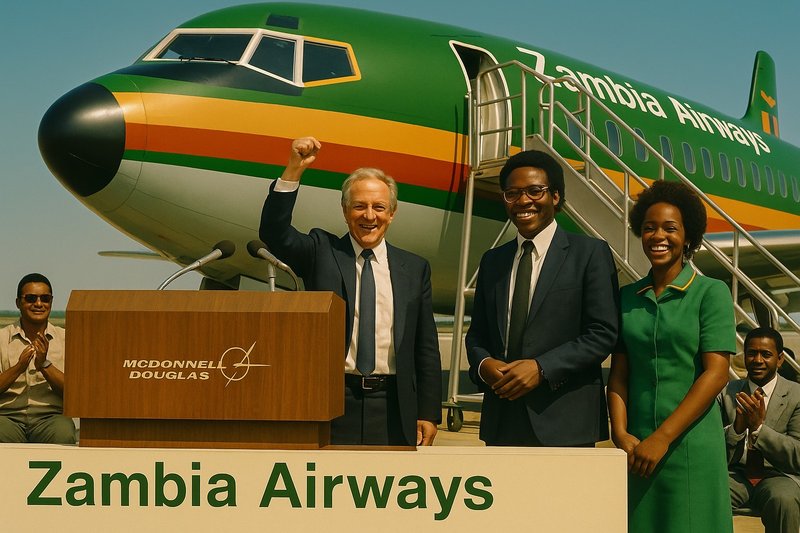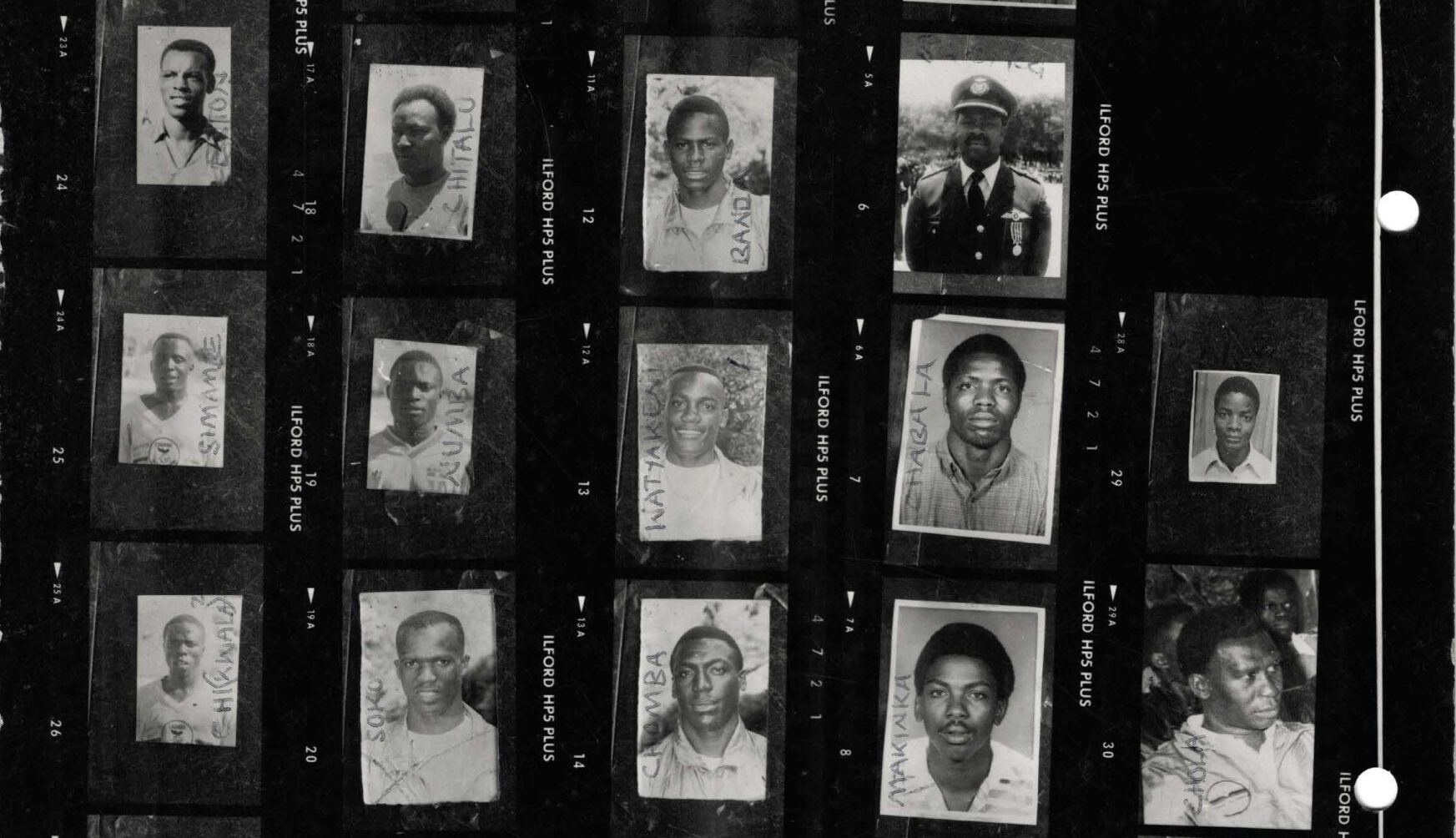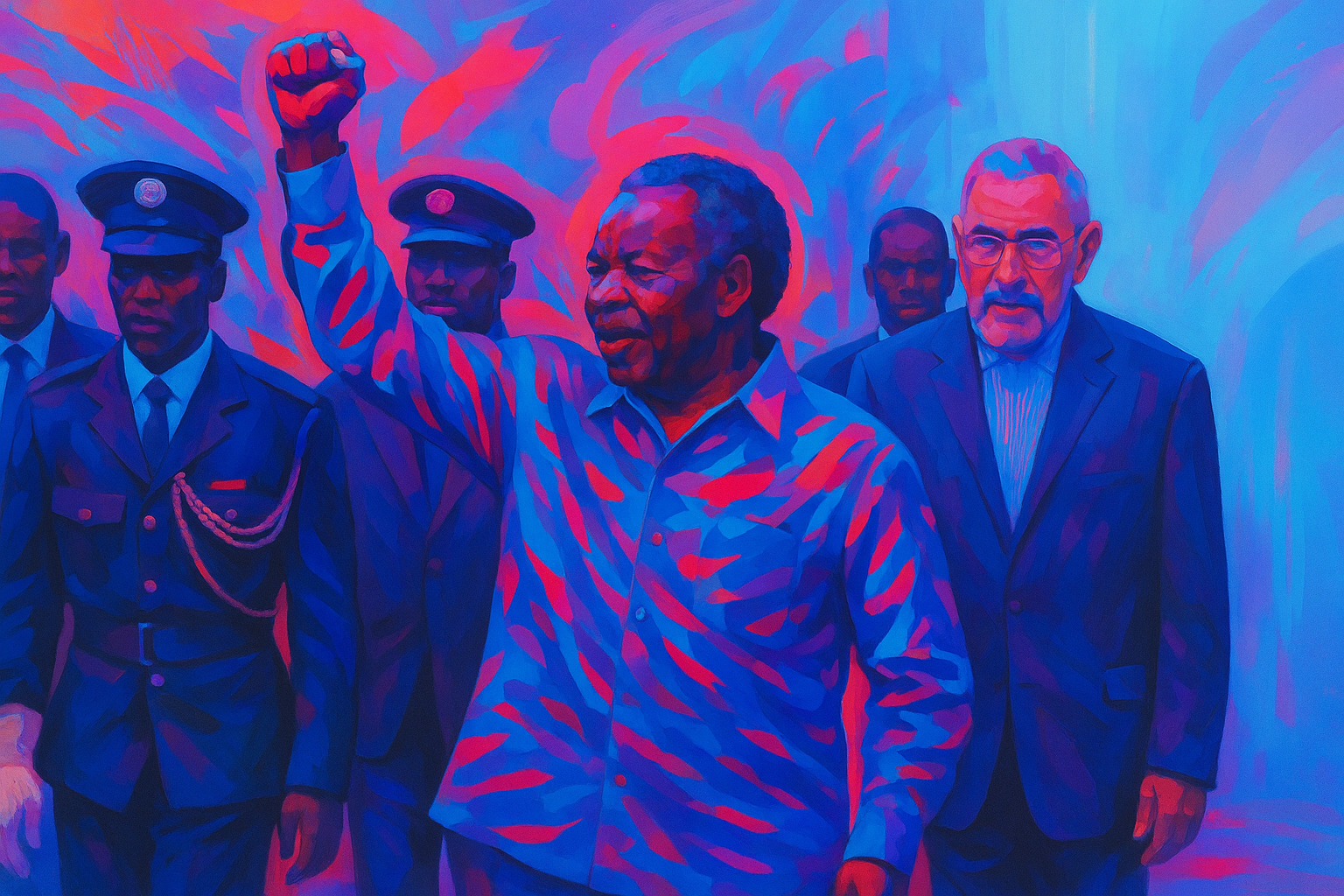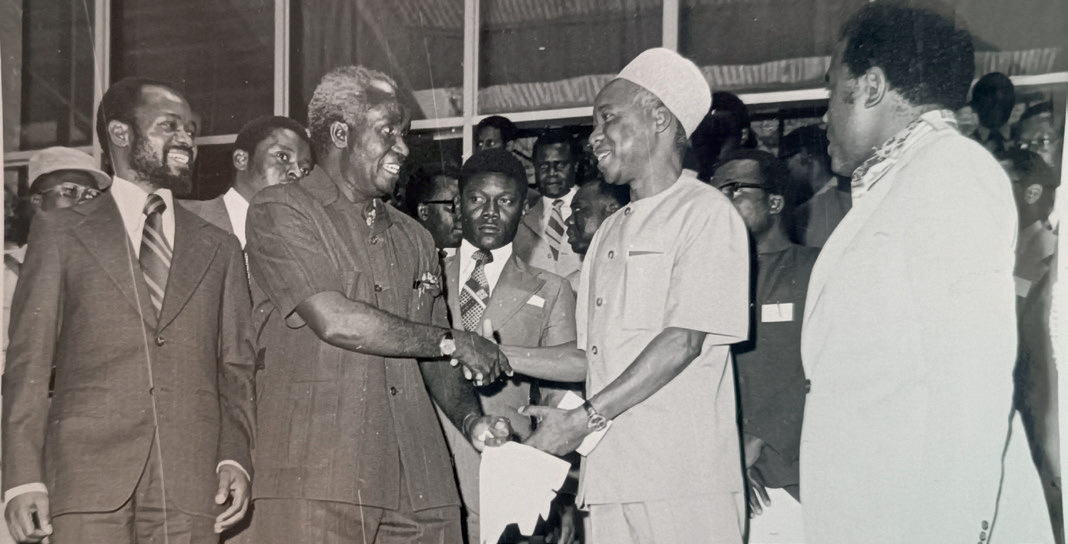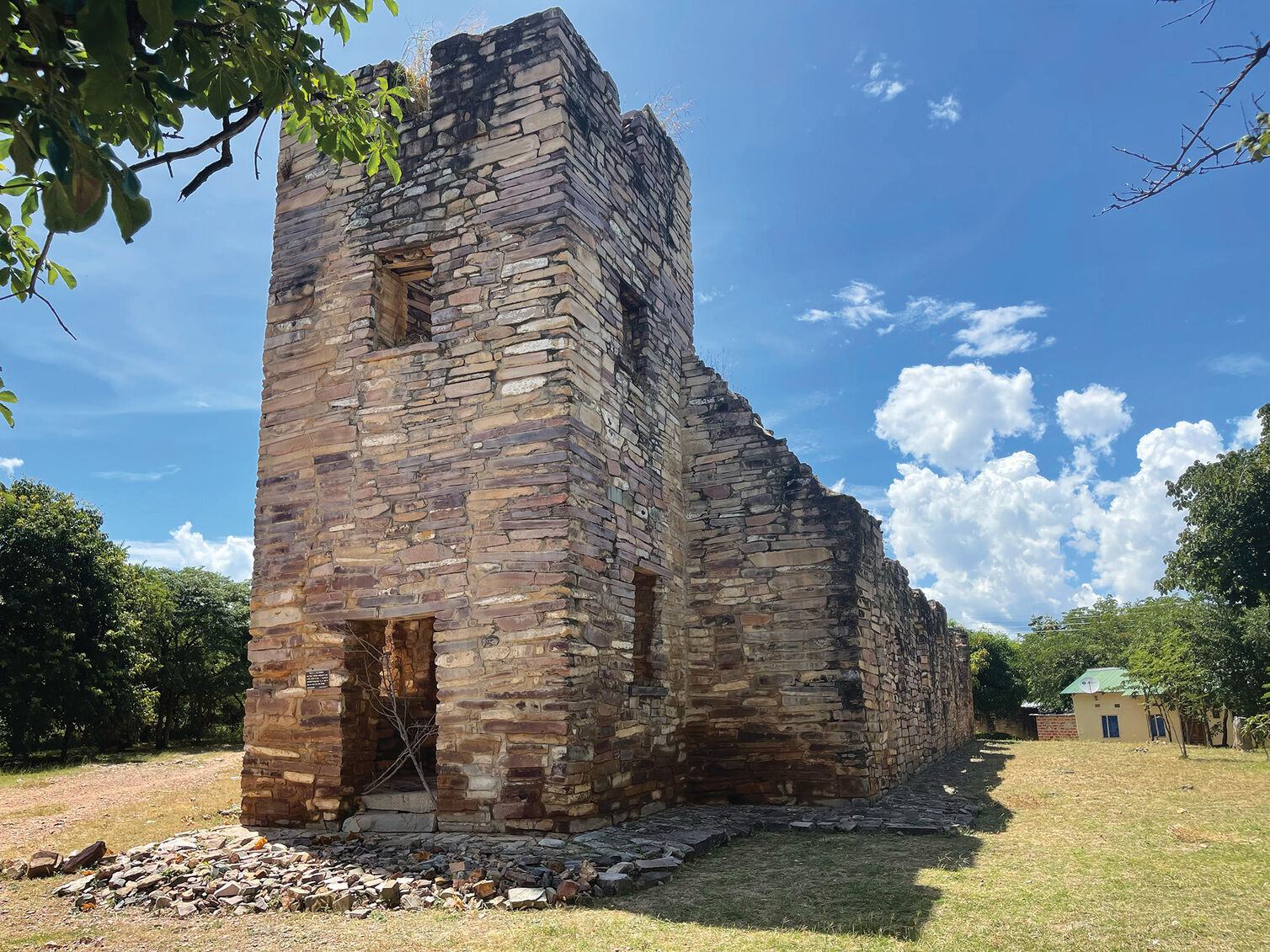From its founding in 1964, and its collapse in the 1990s, Zambian Airways was Zambia’s pride, pioneering routes to London and New York while inspiring generations. Its Zambian-flagged tail and glamorous air hostesses became cultural icons, but mismanagement and economic crisis led to its downfall. After decades of being dormant, the airline relaunched in 2021 with Ethiopian Airlines, partnering to rebuild its legacy. We explore the challenges faced during its initial operation and the strategies implemented for its revival.
A few things are synonymous with Zambian pride: the gleam of copper, the spin of a soccer ball under Barbra Banda's foot, and the 20th-century soar of the green-tailed eagle that was Zambian Airways. Established in 1964 with the dawn of the country’s independence, the airline from a small southern African nation grew to be one of the giants of the African aviation world, hosting some of the most impressive aircraft on the continent while pioneering flights to revolutionary routes. The rise, growth, fall, and eventual rebirth of Zambian Airways run parallel to the glories and stumbles of the nation itself.
The Ascent: Zambia Airways is Born
Founded in 1964 as a subsidiary of Central African Airways, Zambian Airways' fleet started small, acquiring only six aeroplanes of three different models, the smallest of which had seen better years and could carry only about 32 passengers. Despite this, the airline fulfilled its goal of connecting Zambians and the continent at large. The routes within the country included Zambia’s Livingstone and Ndola, and beyond its borders, the airline flew to Kenya, Malawi, Tanzania, and the DRC.

In 1967, Zambian Airways separated from Central African Airways, beginning its existence as an independent entity that would span roughly 30 years. At this point, the airline received managerial support from Alitalia and, eventually, from Aer Lingus. In 1969, it established its first flight to London, expanding its route network to a staggering 12,000 miles.
The airline maintained steady growth in both profits and infrastructure, boasting a skilled and mostly Zambian workforce. In the 1970s it extensively increased its fleet, and in the 1980s it put into service its first wide-body plane. This meant that instead of the single aisle passengers were used to, the aircraft now featured two aisles and would hold over 200 people. This aircraft was the pride and joy of the airline, dubbed Nkwazi, and it was used to launch its first route to New York, making Zambia the first independent Southern African nation to fly to the Americas.
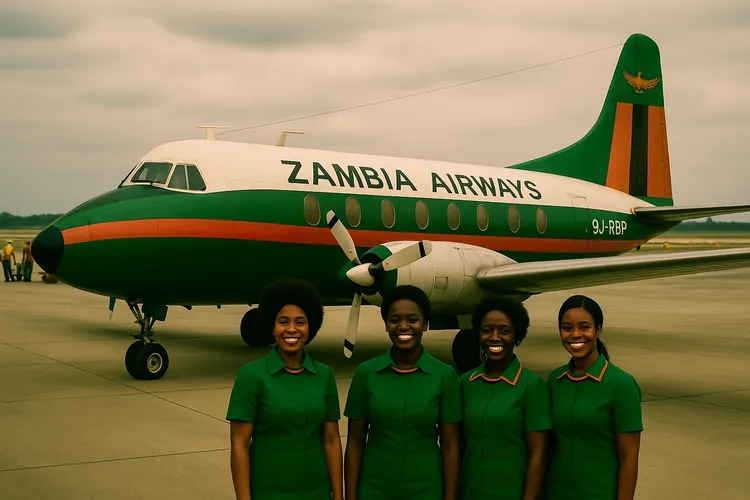
Soaring: Zambia Airways’ Cultural Impact
There was a period in Zambia when being an air hostess was among the most desired professions for young girls, and Zambian Airways was responsible for this. Their flight attendants with permed curls, immaculate makeup, and vibrant green uniforms had careers that took them around the world with each shift. Much anticipated was the annual Miss Zambia Airways Beauty Pageant, where air hostesses competed for a large cash prize and the opportunity to become the new face of Zambian Airways, in turn advertising the airline and the profession to a whole new generation.
The pilots of Zambian Airways also commanded cultural prestige, both within the country’s borders and beyond them. At the time, many of Zambia's neighbouring countries in southern Africa were still fighting for independence, and Zambian Airways served as the link between freedom fighters and their journeys across the continent. Additionally, Zambian Airways boasted some of the first black pilots to fly and land aircraft in segregated areas, such as Alick Sakala, who landed a Boeing aeroplane in Johannesburg during the height of apartheid.
Crashlanding: The Fall of Zambian Airways
Yet even eagles must land, and for Zambian Airways, the fall was far from graceful. Unfortunately for Zambian Airways, the factors contributing to its downfall led to more of a crash landing than the gentle ones it had become known for.
The Iraqi invasion of Kuwait and the subsequent Gulf War of the 1990s led to a sharp increase in oil prices at a time when the buying power of the Kwacha was substantially decreasing and strict exchange control rules were still in place. External shocks collided with internal mismanagement, and frequent strikes led to disruptions in the airline's daily schedule, and employees' concerns were not resolved with the efficiency required to prevent repeat incidents. Political interference resulted in frequent management changes, and while the airline changed hands, safety concerns emerged, and by this point, the company’s profitability was steadily declining while its debt increased.
Staff were reduced, planes were sold, and a restructuring programme was put into place in an attempt to save the company. In 1995, the government ordered the company's privatisation to halt the downward spiral, but the descent was too steep. The airline’s debt had reached $100 million, and as the 1990s ended, so did the last flight of Zambian Airways.
Cleared for Take Off: The Resurrection of Zambian Airways
Zambian Airways had closed with the understanding that it would one day launch again. After some delays due to the COVID-19 pandemic, the Eagle re-emerged in December 2021, now a joint partnership between Zambia and Ethiopian Airlines. There were initial stumbles, but in February 2022, Abiy Asrat Jiru was appointed CEO, and the changes he implemented led to a doubling of domestic traffic within half a year.
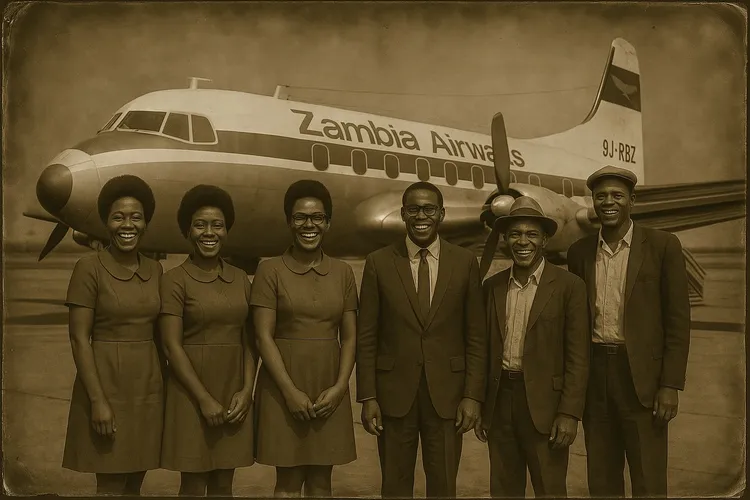
It is still the early days for this current iteration of Zambian Airways, but only three years into its existence, the company has received numerous awards, including Most Transformed and Innovative Company and Most Performing Ethical and Responsive Company. Its fleet and daily flights have expanded under a steady, sustainable, focused growth plan.
The future of Zambian Airways is written in the clouds, as uncertain as the weather, but as boundless. When a country has experienced great glory and then lost it, there can be a tendency to mourn what was and curse what caused its downfall. However, the ability of Zambian Airways to re-emerge a generation later and attempt to regain its splendour speaks to the underlying resilience of the nation itself. The airline was built on the hard work of thousands of dedicated men and women, and if the genetic makeup remains the same, Zambian Airways is destined to spread its wings further. And this time, with the benefit of experience as its guide, it may soar higher than ever.
